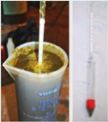Getting the most from your slurry this spring

Getting the most from slurry nutrients was never more significant with fertiliser prices at record highs and legislative limits for nitrogen (N) tightening in an attempt to improve water quality and reduce agricultural emissions.
This current surge in fertiliser prices has 1,000 gallons of cattle slurry being worth in the region of €40 depending on dry matter percentage. Thus making it a very valuable source of nutrients on all farms. All farms should apply the 4 R’s (the right product, at the right rate, at the right time and in the right place) when applying nutrients on farm to get best utilisation and efficiencies this spring.
Buffers
Good management of slurry is needed to maximise crop growth, while at the same time we must try minimise losses to water and the atmosphere. Slurry has valuable nutrients but can cause adverse effects on the environment if not managed appropriately. Phosphorus from slurry can be washed into waterbodies causing eutrophication. The nitrates regulations set out that buffer zones for surface waters double in width from 5m to 10m in the first two weeks before and after the closed spreading period. If fields are sloped towards a watercourse maintain a 10m buffer at all times.
Slurry Testing
There can be a wide variation in slurry dry matter and nutrient content on farms and even between tanks. Just like soil sampling slurry sampling is the only way to know what nutrient values you are dealing with. The best time to take a slurry sample is from an agitated tank. The safest way to get the sample is from the slurry tanker after filling. The slurry hydrometer is a simple tool that measures the density of the slurry shown here on the right. Slurry dry matter percentage is directly correlated to the nutrient value. The dry matter percentage of the slurry is estimated from the graduated scale on the hydrometer and the estimated nutrient value can therefore be obtained from the table below compiled by Teagasc. Alternatively a slurry sample can be sent to a lab for accurate analysis at a cost of between €50-€80. The sample size for the lab should be between 0.5-1.0 litre.


Slurry Safety
- Children and the elderly should be kept away when agitating.
- Only persons involved in the job should be present. At least two people should be present at all times.
- Ensure that Slurry is agitated only on a breezy day
- Move all animals out of the shed before commencing.
- Open all doors and outlets to provide a draught.
- Never stand over slats or near tank access points when agitation is in progress.
- Keep out of slatted shed being agitated for 30 minutes after starting because high gas levels are given off when the crust is broken after commencing agitation.
- Where possible agitate from outside the building.
- Avoid smoking or the use of naked lights as slurry gases are highly flammable.
- Gases can build up and remain in partially emptied tanks above the slurry, never enter a tank for any reason.
- PTO guards of the agitator and the slurry tank need to be fully protected as PTO entanglements have also contributed to on-farm accidents.
- One breath or lung-full of slurry gases can cause instant death.
First Published 24 January 2022
